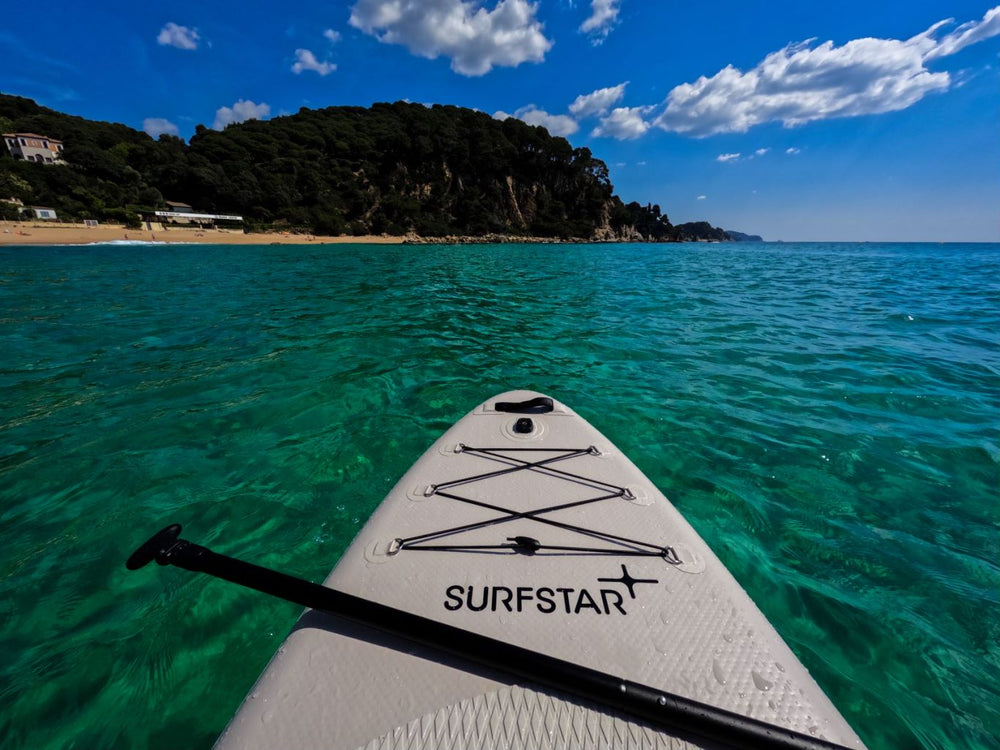How Different SUP Boards Are Made?
Paddle boards can be made from a variety of materials and with a variety of construction types, and this will influence the lifespan of your board, as well its performance, durability, handling and price. Especially for beginners, this variation can be very confusing so this guide will explain how SUP are made.
Most paddle boards are made of fiberglass and epoxy resin layers which surround hollow wood or foam cores. Some cheaper boards can be made from foam too, whilst higher-end paddle boards can be made from a combination of carbon fiber and foam cores. As you might expect, inflatable paddle boards have inflatable cores and PVC plastic outer layers.
Most SUPs are manufactured through a 3D design process which allows designers to digitally test the seaworthiness, buoyancy and performance of a paddle board before it has even been built! There are many advantages to the use of computer graphics programs, including the ability to make new designs faster, more consistent board shapes, faster changes based on consumer feedback and increased manufacturing efficiency. As 3D design allows the process to be more streamlined and efficient, the result is a reduced consumer cost as well as a more consistent product.
The traditional method of making paddle boards is hand-shaping, which is more labor intensive but produces beautiful, unique boards each time. Some SUPs are still hand shaped towards the end of their construction whilst some independent shops and custom SUP makers continue to use hand-shaping techniques for each of their boards.
Most paddle boards are made from either plastic, foam, wood, fiberglass and epoxy resin, carbon fiber or PVC and polycarbonates, which all have their own advantages and disadvantages.
Plastic SUPs are generally inexpensive compared to other types of paddle boards (aside from foam) and they are often more widely available. Great for beginners and families, these SUPs are made in one of two ways. They are either rotomolded, meaning one piece of plastic is rotated and molded to the shape of a paddle board or they are a hard molded plastic shell around a foam or hollow core. Plastic SUPs are durable and tough although they are heavier and slower than other bords. These are a great option for people looking for a durable board that won’t break the bank.
Foam SUPs are also relatively inexpensive and widely available and are made by heat laminating high density polyethylene foam to the top and bottom of a molded foam or foam-based EPS core. While these boards are easy to transport due to their lightweight, they are not as durable as other materials. Foam paddle boards are easier to transport than other solid SUPs as they weigh less but they still take up the same amount of room to store them.
For a faster SUP, you may want to choose a wood one, which is made by gluing wood to the top and bottom of a hollow wooden frame and then covering the entire board in fiberglass cloth and epoxy resin to render it waterproof. Generally, these boards are only available in custom shops and online, meaning they aren't ideal for beginners but are great for people who want smooth paddling and the ability to go fast!
If you’re a serious paddler, or into racing and long-distance paddle boarding, fiberglass might be the material of choice for your SUP. The most common fiberglass SUP construction method is wood sandwich fiberglass construction, which is when alternating layers of fiberglass, wood and veneer are used to construct the board and the middle of the board includes some PVC. Alternatively, fiberglass boards may be constructed using the advanced sandwich technology method which doesn’t include PVC and instead the board has an EPS foam core and sandwiched fiberglass and wood.
Carbon fiber boards are a great option for racing pros who are mainly concerned with speed. Again, carbon fiber SUPs use foam cores, but instead of fiberglass layers they have carbon fiber layers. To get a smooth finish some carbon SUP boards have a fiberglass layer on top of the carbon fiber. To finish the board, a layer of paint is applied in order to reflect the sunlight and prevent the SUP board from overheating.
Finally, inflatable SUP boards are a great choice for cruising on flat water, and are easily transported and stored as they can be deflated to a fraction of their size. The cost of them can vary greatly depending on their quality and they are generally mid-range in maneuverability and speed performance. Inflatable paddle boards are made by drop-sticking 2 layers of polyester fabric together and then using an air-tight coating over the outside surfaces. The side-wall material is made from polyester fabric, which is also coated on both sides, and to finish the board a wide-seam tape is glued over each seam, making the board air-tight. Drop stitching is a process that can use up to 400 needles on a machine to sew thousands of threads between two layers of fabrics. This creates flexibly joined fabric which will give you a strong product that can expand and contract as you would expect for an inflatable board.
SUPs can be made in a huge variety of ways and from many different materials. There are advantages and disadvantages to each type of SUP, depending on these factors, so you can choose which paddle board will work for you. Spending some time researching the different types of SUPs and how they are made will ensure that you make the right choice.





Leave a comment